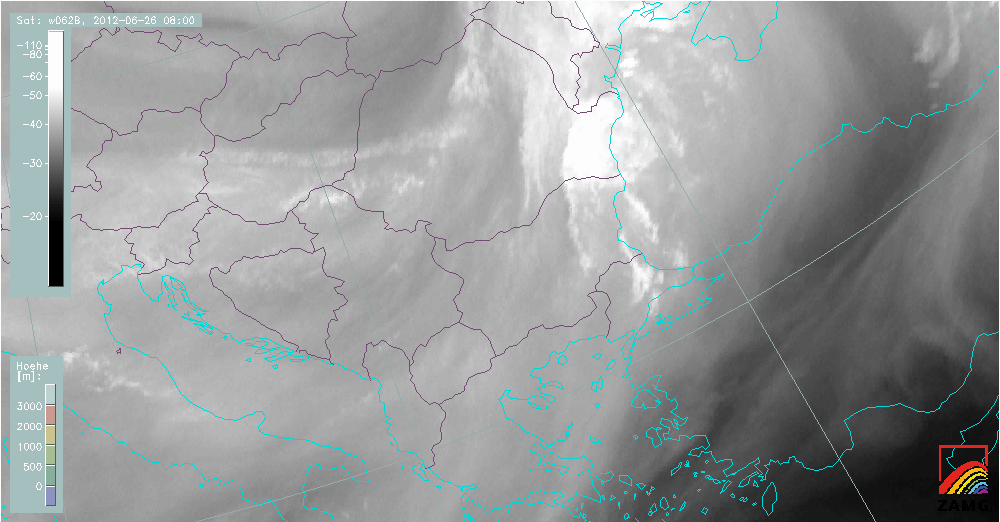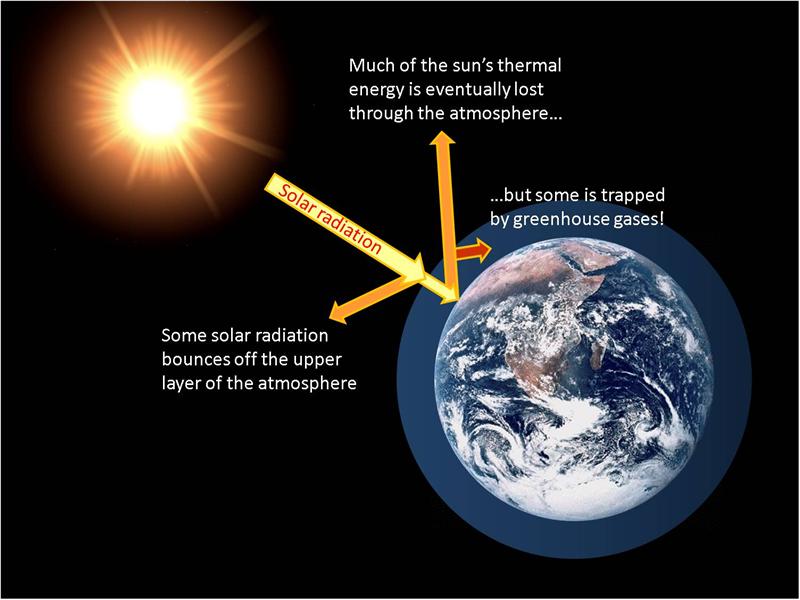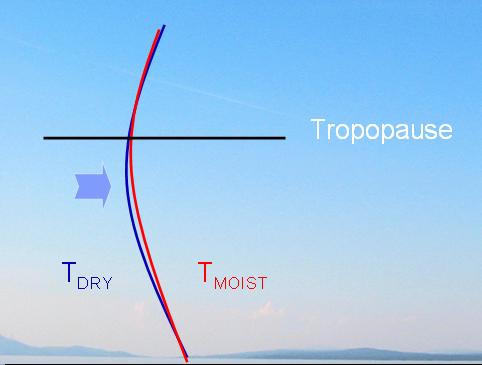Convective initiation
When studying convective initiation, the focus is often on parameters near the surface (e.g. moisture convergence, convective temperature, lifting condensation level, orography, etc.). Convection, however, can also be triggered higher up. This chapter deals with deep moist convection (DMC) triggered in the upper levels, which can be seen in WV images.
When and where convection initiates in a conditionally unstable atmosphere depends on factors like orography, wind shear, moisture and baroclinity. In this chapter we will focus on the so-called pulse convection, which mostly occurs during the day without frontal zones or distinct convergence or other boundaries near the surface. Pulse convection usually develops within a warm air mass in a situation where there is a weak surface high and an upper ridge above it.
Figure 1 shows such a synoptic situation over Turkey; convective cells are developing near the vicinity of a black WV stripe (figure 1a) while the corresponding HR-VIS image (figure 1b) shows shallow convection over central Turkey but gives no indication where DMC will initiate.
a) 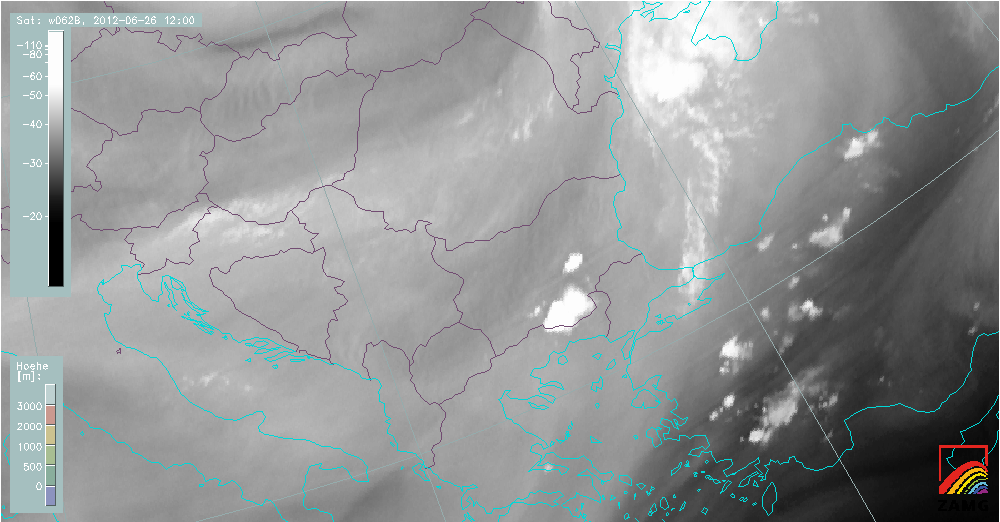 |
b) 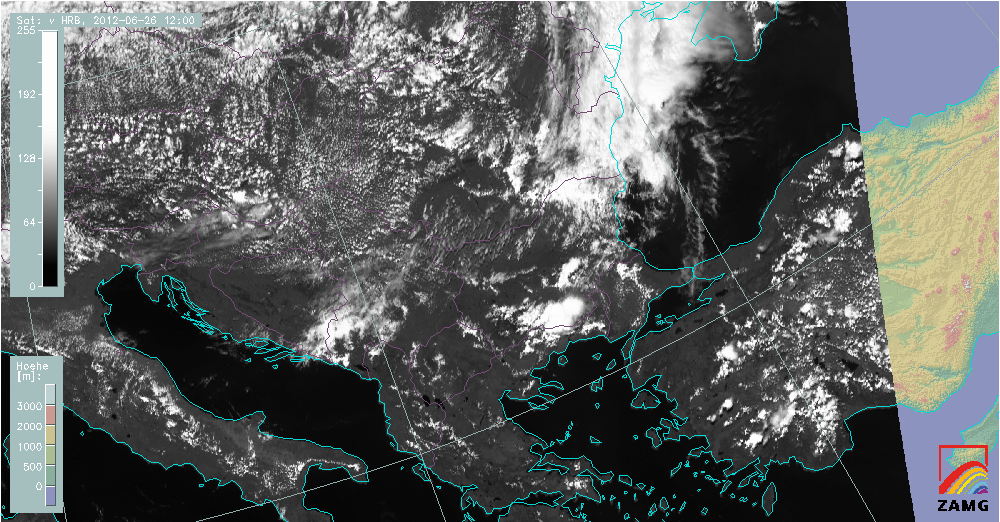 |
Figure 1a – 1b: WV 6.2?m satellite image from 26 June 2012 at 12:00 UTC (top) and HR-VIS image of the same date (bottom).
Figure 2: WV 6.2 µm satellite loop at 26 June 2012 from 08:00 UTC to 14:00 UTC.
One of the most effective triggers for convection is orography. According to Doswell (1987), DMC requires sufficient available moisture, conditional instability and a source of lift. If enough lifting energy is provided, a rising air parcel might reach the condensation level, leading to strong DMC at the level of free convection. If the lifted parcel starts from a higher surface, such as a mountain slope, less energy is needed to reach the level of free convection.
Less known, but hardly less effective for initiating convection, are moisture boundaries in the atmosphere. These boundaries in the mid-troposphere are easily detected in WV 6.2 µm satellite imagery. The question is, why does convection often initiate at WV boundaries?
Incoming short wave radiation from the sun is not significantly weakened by atmospheric water vapour (atmospheric window). However, water vapor absorbs a large deal of outgoing long-wave radiation, as it is one of the most effective greenhouse gases.
Strong solar radiation leads to a temperature increase on the surface and the air near it, thus increasing the vertical temperature gradient and instability near the surface. Water vapour, on the other hand, leads to a temperature increase in the higher levels due to the absorption of the outgoing long-wave radiation (figure 3).
Figure 3: Schematic explaining the greenhouse effect which warms up the Earth's atmosphere (red arrow).
Another mechanism concerning diabatic heating of the troposphere, though not very pronounced, shall be mentioned here. Incoming long-wave solar radiation is also absorbed by atmospheric trace gases like water vapour. According to Liou (2002, p87), long-wave IR radiation from the sun accounts for about 50% of the incoming energy.
Seen this mechanism alone and excluding other processes (e.g. advection), a certain fingerprint regarding the vertical temperature profile and the distribution of WV in the atmosphere can be seen.
The mechanism described above explains why DMC often appears first at WV boundaries. In fact, convection could start at any point where temperature stratification becomes unstable. Indeed, this is often the case, a fact that glider pilots experience during their flights.
The development of DMC requires a source of humidity. If the troposphere contains too much moisture, instability will be slower to develop than in a dry atmosphere, where super-adiabatic temperature gradients will quickly appear near the surface, provided solar irradiation is strong enough.
Within and near WV boundaries, temperature gradients increase rapidly near the surface, but tropospheric moisture absorbs only little long-wave radiation. Consequently, there is enough lift and moisture for convection to initiate and even intensify.
The more moisture there is in the troposphere, the more solar energy is absorbed before reaching the surface. The solar energy absorbed by atmospheric WV tends to reduce potential instability (figure 4).
Figure 4: Idealised temperature profiles of a dry compared to a moist troposphere under the presumption of atmospheric heating by greenhouse effect. The vertical temperature distribution is more unstable in the colder, dry air than in the warmer, humid air in the middle and upper troposphere (blue arrow).
Moreover, black stripes usually designate regions with descending dry air from higher atmospheric levels. This dynamic process conteracts the process of DMC by capping ascending air parcels in the form of higher-up inversions. In these regions, more convective energy will be needed for an air parcel to reach the level of free convection.
